Bathroom updates often start with the shower—and the tile choices made there can define the entire space. With so many materials, colors, and patterns available, mixing and matching tiles has become a smart way to personalize a bathroom while boosting visual interest. Homeowners are increasingly drawn to thoughtful contrasts like matte and gloss finishes, geometric pairings, or natural stone with clean subway tiles. These curated combinations go beyond trends, offering long-term value and design flexibility. If you’re renovating or just planning ahead, the ideas in this guide will help you build a standout shower that feels intentional, balanced, and truly yours.
Plaid and Gingham Tiles

Patterns rooted in textile tradition are making their way into bathrooms through plaid and gingham tile layouts. These nostalgic prints lend structure and symmetry to otherwise fluid spaces, bringing a unique visual rhythm that’s both familiar and unexpected. Available in porcelain or ceramic, they typically feature contrasting colors that form grid-like patterns on floors or shower walls. The key is keeping the color palette restrained to avoid overwhelming the space. Pairing soft neutrals like cream and charcoal can balance the pattern’s boldness, allowing it to read as stylish rather than busy. Best used in mid-sized showers, these designs offer visual interest without crowding the room. Matte finishes work well to tone down the high-contrast lines, while minimalist fixtures prevent the look from tipping into kitsch. For a subtle nod to farmhouse or cottage style with a fresh twist, plaid and gingham tiles deliver charm, structure, and statement in equal measure.
Tile Drenching
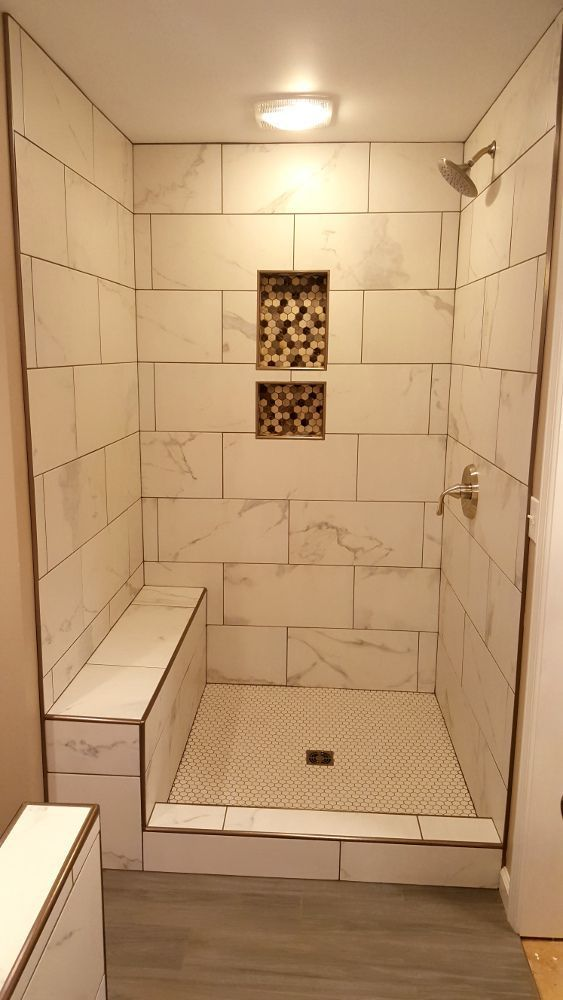
Covering all surfaces—from walls to ceilings—in the same tile material creates a unified visual envelope known as tile drenching. This technique has gained traction in contemporary interiors for its ability to blur spatial boundaries, especially in compact bathrooms. By using a single tile type throughout the shower zone, you achieve an immersive, architectural finish that emphasizes volume over fragmentation. Glossy tiles can amplify light, while matte ones absorb it, both influencing the mood and feel of the shower. Texture and grout color are essential considerations here, as repetition across surfaces magnifies these details. Tile drenching pairs well with minimal glass partitions or open-plan showers to avoid disrupting the continuity. For a spa-like retreat or a hyper-modern statement, this cohesive method delivers impact with design restraint. It’s most effective when used with quality materials such as porcelain, natural stone, or zellige to ensure durability and aesthetic longevity.
Marble with Metallic Accents
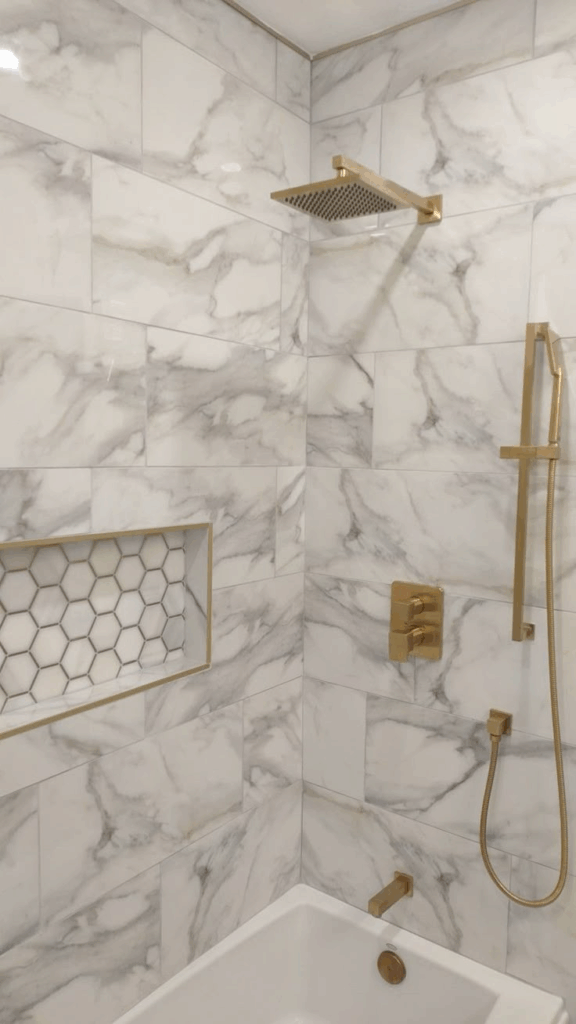
Luxury finds its footing when rich veining in marble pairs with the lustrous sheen of metal finishes. This high-impact combination balances the organic coolness of natural stone with the warmth or polish of materials like brass, copper, or stainless steel. White marble with soft gray veining acts as a neutral canvas for gold fixtures or brushed nickel inlays. Designers often use metallic trim lines within tile joints, or highlight built-in niches and shower hardware with accent metals to punctuate the space without overwhelming it. Lighting also plays a key role, as both marble and metal surfaces reflect ambient light to add dimension. Consistency is vital—repeat the same metal finish in your faucets, drain covers, and towel hooks to tie the look together. This tile combination works beautifully in contemporary, glam, or transitional bathrooms, offering a refined edge that feels timeless and indulgent without being excessive.. This combination works best in well-lit showers where the reflective surfaces can shine. It’s ideal for upscale bathroom renovations aiming for timeless elegance with a hint of glamour. Avoid pairing with too many competing materials to let the marble and metal dialogue remain the focal point.
Natural Elements
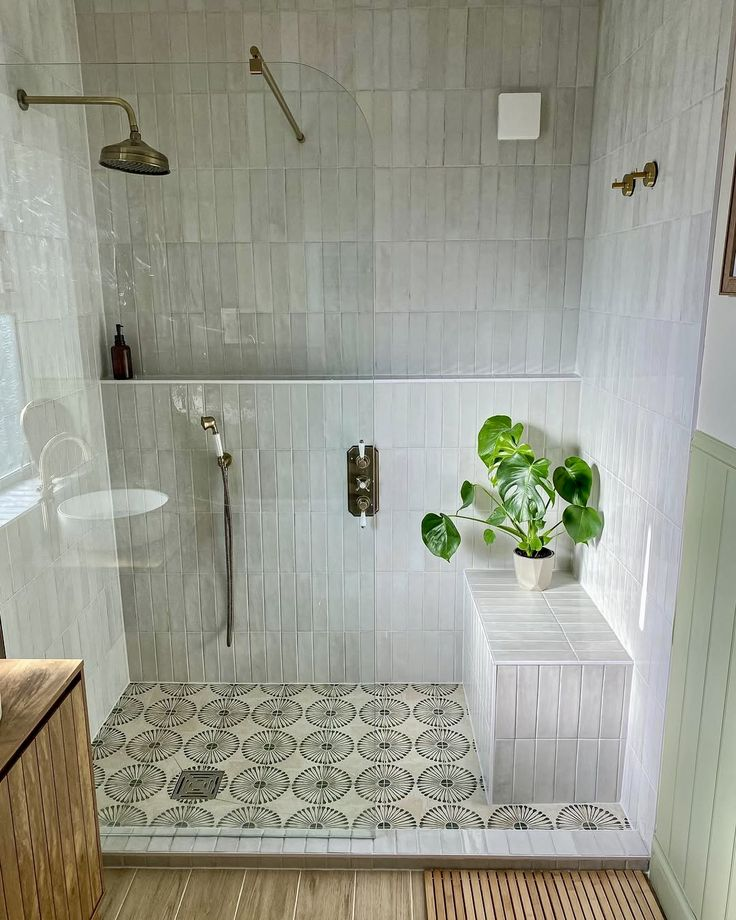
Stone-inspired porcelain, river rock tiles, and slate textures invite the outdoors into your shower. Using tile that mimics or features raw materials brings warmth and grounding energy to a space that’s often sterile. Think pebbled shower floors for a tactile experience or stone slab walls that echo nature’s irregularities. Earthy hues—beige, sand, charcoal, olive—complement this style, evoking a spa-like ambiance rooted in tranquility. Balance is key; pair textured stone with smooth, neutral walls or glass dividers to maintain visual openness. This design direction aligns with biophilic principles, supporting well-being by referencing nature. It’s ideal for those craving a meditative, organic atmosphere in their daily routine. When selecting natural element tiles, opt for slip-resistant finishes and sealants that protect against water penetration without dulling the stone’s texture.
Gloss and Matte Tile Mix
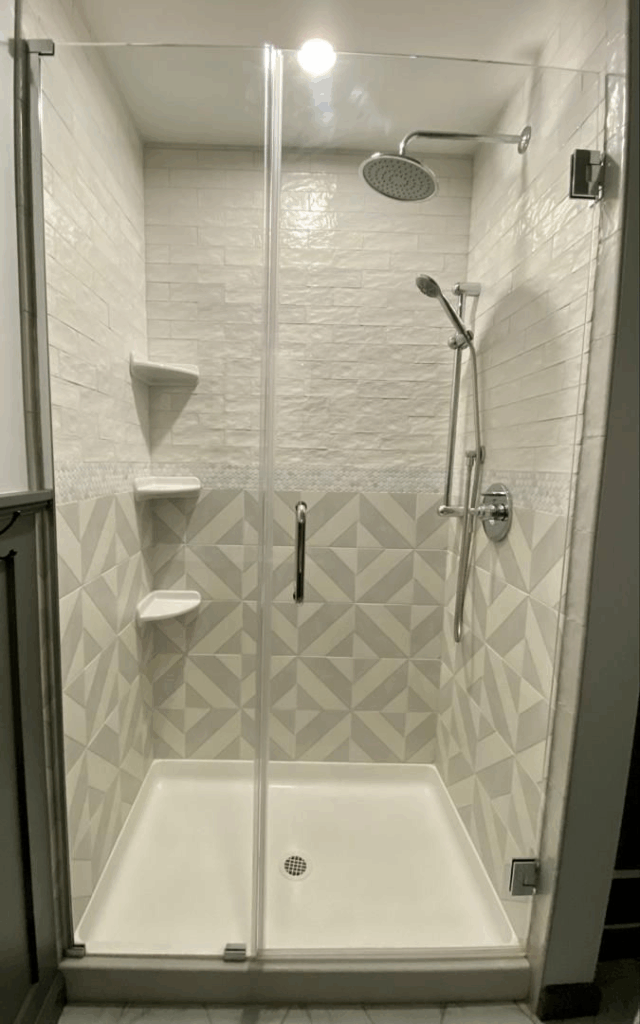
Juxtaposing glossy and matte tiles within the same color family creates dynamic visual layering in a shower space. This technique plays with light reflection and texture, offering depth without relying on pattern or color contrast. For example, alternating matte and glossy subway tiles in a staggered layout adds dimension while keeping the palette restrained. The trick lies in thoughtful placement—use gloss tiles higher on walls to reflect light and matte options on lower areas or floors for slip resistance. This combo is especially effective in monochrome or neutral-toned bathrooms where subtle shifts in finish become the star. Pair with minimal hardware and frameless glass to let the tile finish interplay take center stage. It’s a smart solution for those seeking understated sophistication and surface variety without straying into overwhelming territory.
Large-Format Tiles
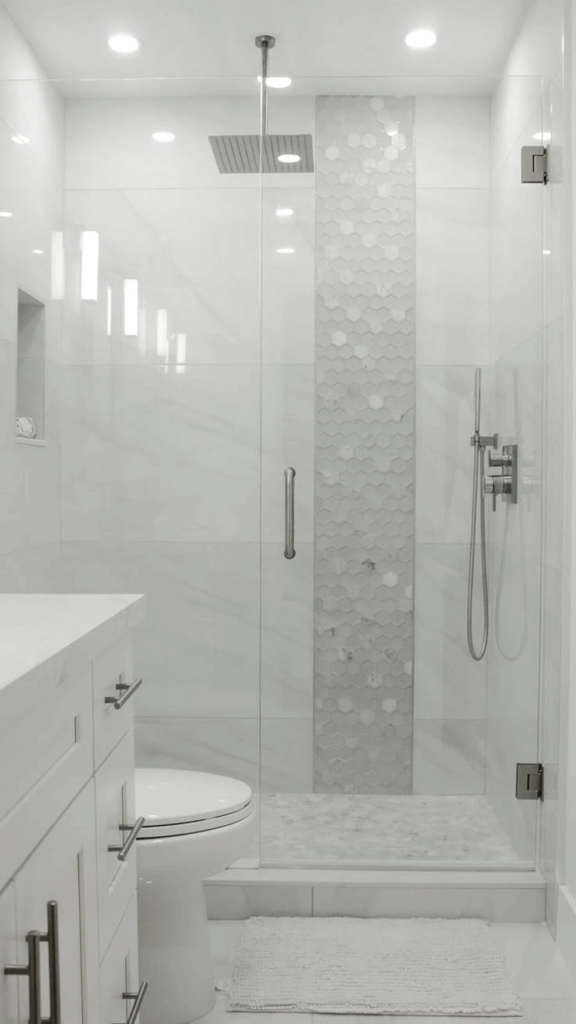
Oversized tiles create a sleek, uninterrupted surface that makes even the smallest showers feel more expansive. With fewer grout lines, they offer a cleaner, more seamless appearance, making maintenance easier and visual clutter minimal. These tiles—often 24 inches or larger—excel in modern or minimalist settings but can also soften traditional designs when selected in neutral tones or stone-like patterns. Rectified edges allow tight joints, reinforcing the illusion of a continuous plane. For vertical installations, tall rectangles can emphasize ceiling height, while horizontal placement can stretch the visual width. Matte or polished, these tiles adapt easily across design styles. When working with large formats, proper substrate preparation is crucial to avoid uneven surfaces. Ideal for high-end showers and wet rooms, this format brings both functional ease and bold visual impact.
Zellige Tiles
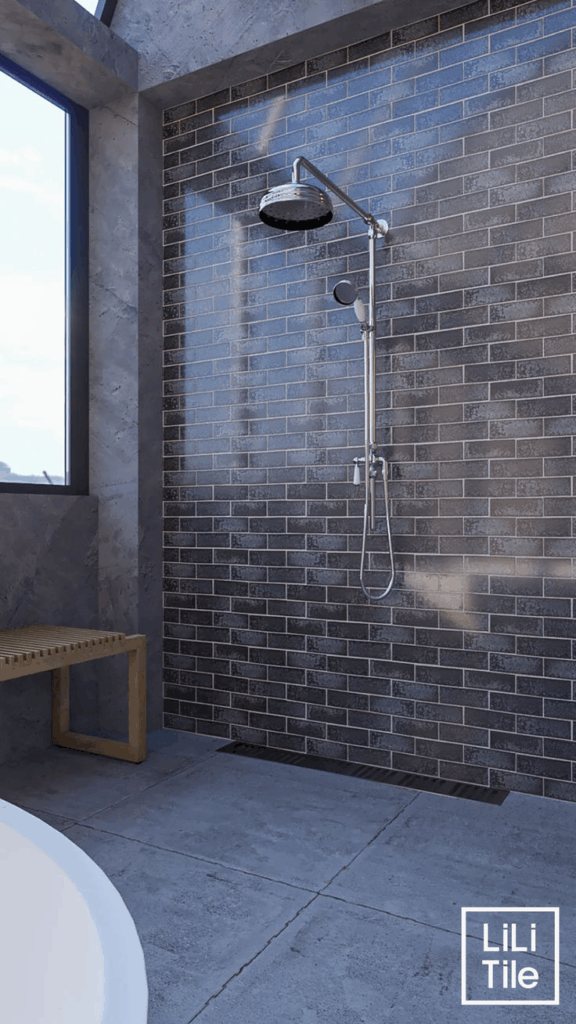
Handmade Moroccan zellige tiles add soul and movement to shower interiors. Each piece carries slight variations in color and texture, creating a surface that feels alive. These glazed clay tiles reflect light differently across each tile, producing a shimmering mosaic effect even in solid colors. The slight unevenness gives character and depth, especially when installed on walls or niches. Traditionally square and around 4 inches, zellige can also be found in more modern hex or rectangular formats. Though their surface may appear irregular, they’re surprisingly durable when properly installed and sealed. This tile style thrives in eclectic, bohemian, or Mediterranean-inspired bathrooms, often in earthy greens, soft blues, and off-whites. Due to their handmade nature, expert installation is key to managing inconsistencies. Zellige brings artisanal charm and nuanced imperfection that many modern bathrooms lack.
Earth Tones
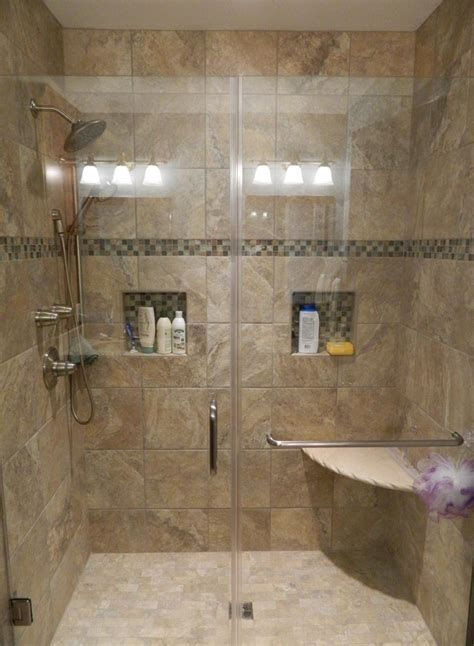
Grounded color palettes inspired by clay, terracotta, sand, and moss make showers feel warm and rooted. Tiles in these tones soften the hard edges of ceramics and foster a connection to the natural world. Perfect for rustic, Japandi, or southwestern bathrooms, earth-tone tiles offer a relaxing counterbalance to cold metal fixtures or stark white walls. Use matte or honed finishes to reinforce the natural, unfussy appeal. Incorporating tonal variation within one color family—like rust to cinnamon—can subtly animate the shower without dominating it. Earth tones also blend well with wood-look tiles, stone elements, or raw brass fixtures. Ideal for users seeking comfort and coziness without loud design statements, this palette delivers warmth and versatility with timeless charm.
Terrazzo Tiles
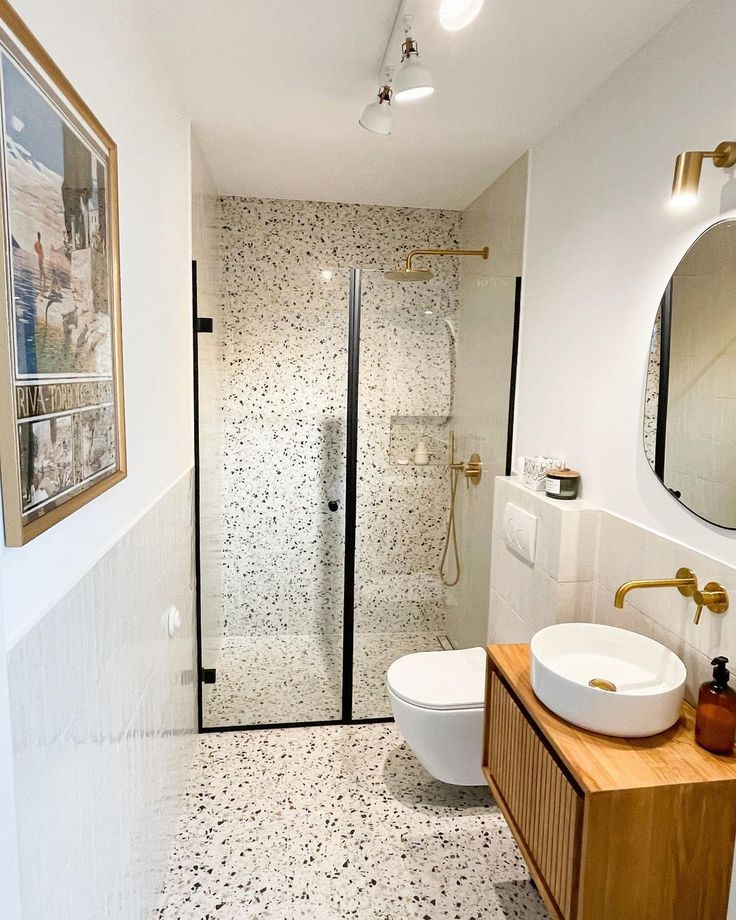
With roots in Italian craftsmanship, terrazzo tiles offer a playful yet sophisticated aesthetic for shower walls and floors. Composed of marble, quartz, or glass chips embedded in a cement or resin base, terrazzo tiles deliver a speckled surface full of texture and color. They’re available in both bold and muted variants, from soft gray bases with white fragments to more vibrant mixes with coral, navy, or mustard chips. Best suited for modern or mid-century style bathrooms, terrazzo balances retro vibes with contemporary function. Its visual busyness makes it ideal for feature walls, while more subdued blends can wrap an entire shower. Select honed or matte finishes for slip resistance and ensure tiles are sealed properly to prevent water damage. For those looking to introduce color in an unconventional way, terrazzo offers variety, resilience, and personality in one versatile surface.
Geometric Patterns
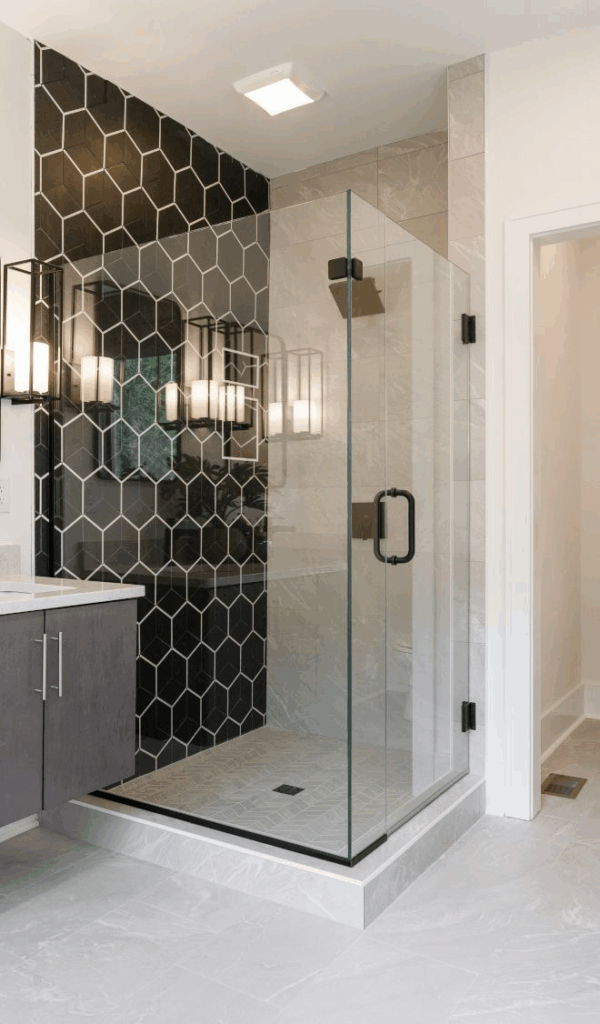
Tiling that features triangles, hexagons, or diamonds transforms the shower into a graphic, eye-catching zone. Whether it’s black-and-white honeycomb tiles or multicolor chevrons, geometric shapes bring structure and rhythm. These patterns work well in contemporary or art deco-themed bathrooms, where visual play is part of the design language. Depending on color selection, the effect can range from playful to refined. Geometric tiles can be used on shower floors for traction or as statement walls to create depth. Offset their complexity with simple surroundings—clear glass, light-colored grout, and pared-back hardware. This style suits homeowners wanting a visual centerpiece in their bathroom without relying on bold colors. Make sure tile alignment is precise, as any error can disrupt the symmetry that geometric designs rely on.
Subway Tiles with Colored Grout
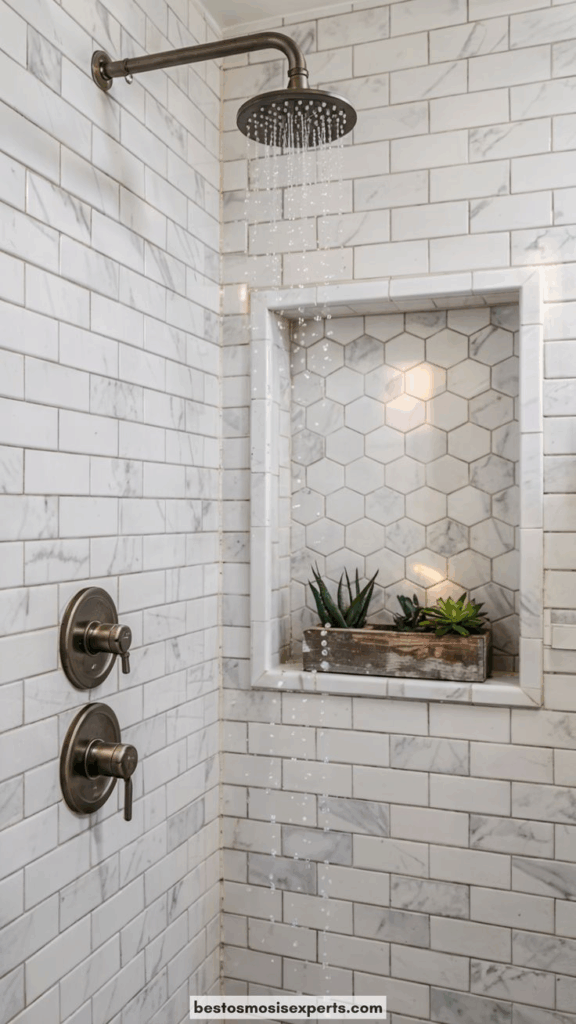
Classic subway tiles gain a modern twist when paired with colored grout. Whether it’s navy blue grout with white tiles or soft pink grout with gray tiles, this contrast adds definition and flair. The grid-like structure becomes a design feature, guiding the eye and introducing a playful element. This style is ideal for anyone wanting to update a traditional look without straying too far from the familiar. Use it to highlight patterns like herringbone or stacked layouts, enhancing the architectural feel of the installation. Opt for epoxy or stain-resistant grouts to keep colors crisp over time. When thoughtfully executed, colored grout transforms humble subway tiles into a bold design statement with minimal material change.
Mosaic Accents
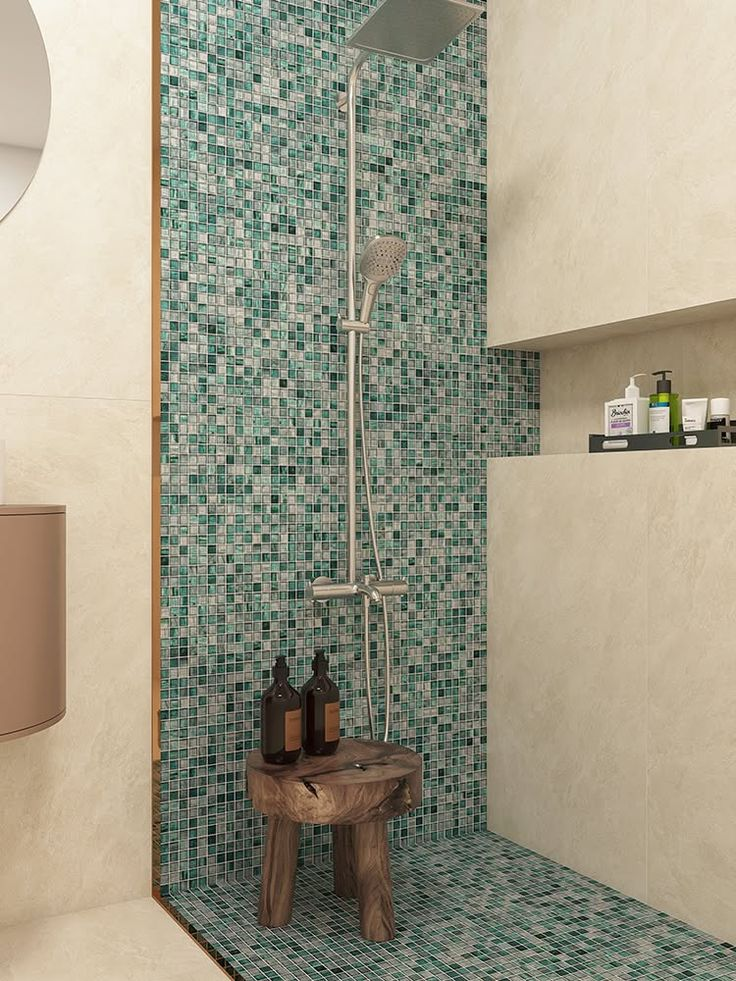
Tiny tiles arranged in intricate patterns bring an artisan touch to shower spaces. Mosaic accents are often used in niches, borders, or central panels to add personality and contrast. These tiles can be made from glass, ceramic, stone, or metal, offering endless combinations in color and texture. Popular styles include Greek key borders, herringbone bands, or floral medallions. Because of their scale, mosaics work well in small doses—strategically placed to highlight features rather than overwhelm. Pair with larger field tiles to balance visual weight and simplify maintenance. Mosaics are ideal for custom looks or adding a splash of color without committing to full walls. Always use waterproof backing and high-quality grout to maintain integrity in wet conditions. For bathrooms that lean on character and detail, mosaic tiles deliver with timeless artistry.
Wood-Look Tiles

Porcelain tiles that mimic the texture and appearance of wood offer the warmth of timber without the maintenance risks. These tiles are water-resistant, durable, and available in a wide range of grain styles—from weathered barnwood to sleek walnut. Perfect for rustic, farmhouse, or spa-inspired showers, wood-look tiles work well on floors and walls alike. Their elongated shape helps stretch visual lines, making narrow spaces feel longer. Textured finishes provide slip resistance, especially on floors. Use staggered or herringbone layouts for added visual interest, and contrast with stone or matte black accents for a modern edge. This tile choice satisfies those seeking natural aesthetics with practical longevity. Ideal for creating a cozy retreat vibe in a moisture-prone space.
Bold Color Blocks
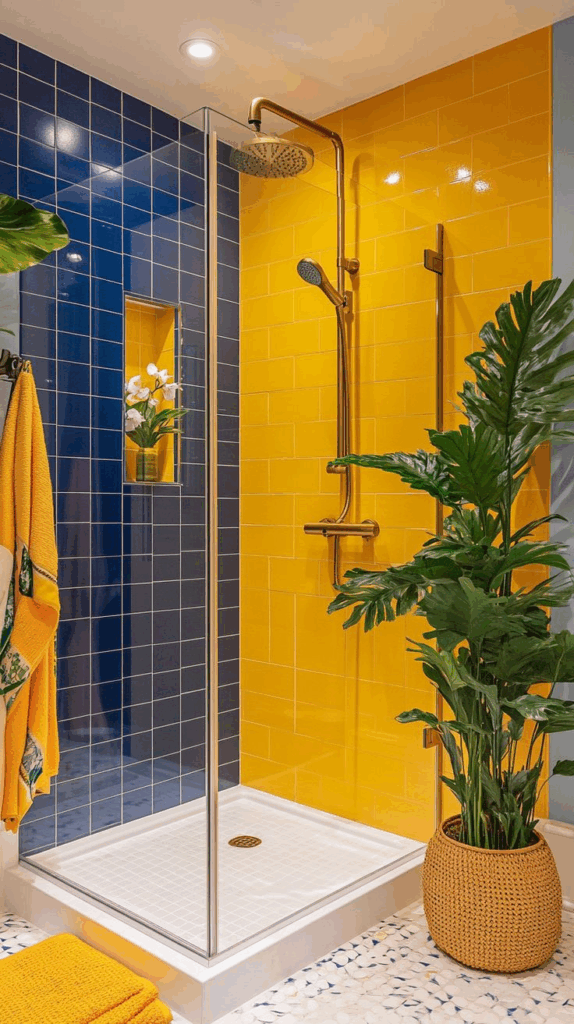
Solid tiles in vibrant hues—like cobalt, coral, or emerald—bring unapologetic energy into the shower. These saturated tones work best when used intentionally, either to create a feature wall or delineate zones in larger showers. Glossy finishes amplify brightness, while matte options ground the color for a more subdued look. Color blocking is especially effective when paired with neutrals, allowing bold tiles to command attention without overwhelming the room. Consider balancing bright blocks with minimalist fixtures or neutral flooring to maintain cohesion. Great for creative personalities or family bathrooms looking to break away from safe design tropes, this approach introduces fun and identity into the shower zone.
Textured Tiles
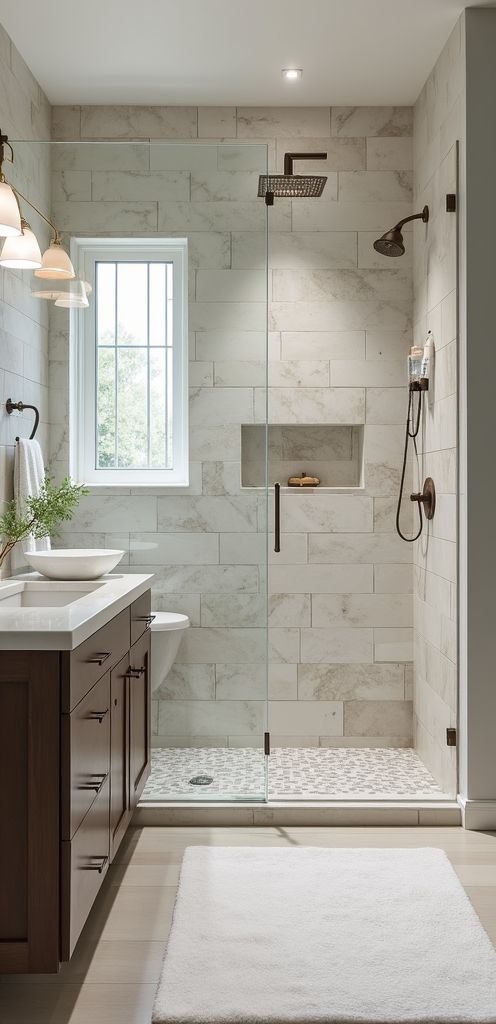
Three-dimensional surfaces add tactile depth and subtle shadows to shower walls. From ribbed ceramics to sculpted wave patterns, textured tiles elevate plain surfaces into visual experiences. These tiles are typically used on feature walls to draw attention without color contrast. Light plays a crucial role here—angled lighting can accentuate texture for dramatic effect. They’re particularly impactful in monochrome bathrooms where surface variance substitutes for color variation. Textured tiles are also practical, offering better grip when used on floors. Best for modern or minimalist designs that value form through material, these tiles add sophistication without relying on busy patterns or bold tones.
